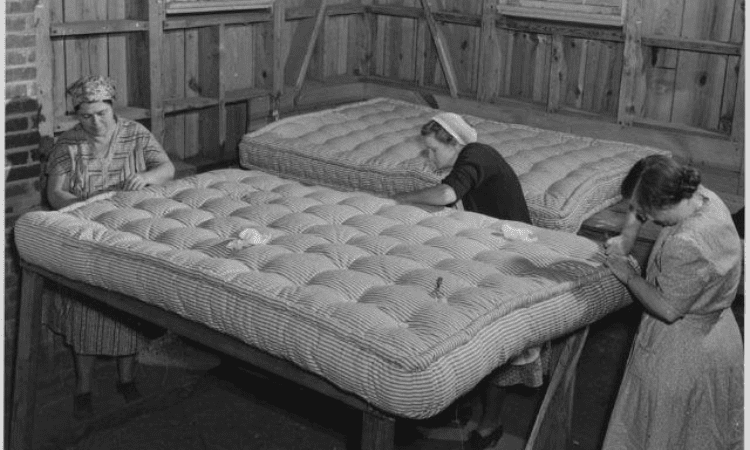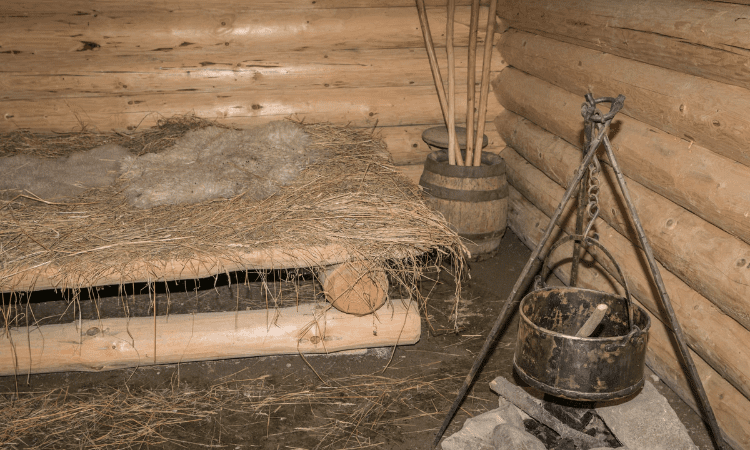Mattresses have been used for ages. The first materials used to construct beds were leaves, hay, and straw. These mattresses were the best of the group at the time, despite being frequently rough and uncomfortable.
Mattress production changed during the Middle Ages, with softer materials such as down and feathers being employed. Despite their high price, these mattresses were a significant improvement over their predecessors.
The development of the innerspring mattress in the middle of the nineteenth century transformed the mattress industry. Innerspring mattresses, which are noted for their ability to both cushion and support sleepers, are made using metal springs. As an extra plus, despite giving the same amount of comfort, these mattresses are less expensive than their conventional equivalents.
Foam and latex were pioneered for usage in mattresses in the twentieth century. These materials offer a wide range of comfort and support options, allowing mattress manufacturers to develop more mattresses to fulfill the demands of individuals with diverse sleep preferences.
Nowadays, there is a wide range of mattresses accessible. Mattresses of various materials, shapes, and sizes are offered to the consumer, who is then free to make their own selection. Mattresses can also be customized to match the special needs of different sleepers.
Ancient Times: Sleep Practices and Primitive Types of Bedding
Because they had no other choice, prehistoric humans slept barefoot on the ground. When ancient societies matured, though, they began to use mattress materials to improve the quality of their sleep.
Some of the first materials used to build beds were leaves, grass, and straw. It was common practice for folks in the area to obtain these items. Even if they were unpleasant, these alternatives were superior to sleeping on the ground.
Mattress manufacturing techniques evolved alongside civilizations. In ancient Egypt, bedding was primarily constructed of linen and filled with wool or feathers. The mattresses were more comfortable than what had previously been used and contributed to a good night’s sleep.
Sleeping Practices in Ancient Times & How They Impacted the Development of Modern Mattresses?
The behaviors of ancient societies’ bedtime routines have heavily affected modern mattress manufacturing. The ancient Egyptians recognized the necessity for a pleasant sleeping surface and invented linen and feather mattresses.
The Romans had a significant influence on the evolution of mattresses. When compared to traditional mattresses, ones with built-in springs provide substantially greater support and comfort.
Ancient sleeping practices have had a significant impact on modern mattresses. Most mattresses developed nowadays are designed specifically to be a soft and relaxing place to sleep. Furthermore, by providing support and comfort, they contribute to a more enjoyable and peaceful night’s sleep.

The Evolution of Mattresses and Their Connection to Ancient Beds
Ancient civilizations’ use of primitive bedding had a long-lasting influence on current mattress design. Grass and leaves, for example, are still commonly employed in certain modern mattress designs. Springs are a byproduct of older mattress designs that no longer serve any use.
Modern mattresses have come a long way since their forefathers, yet they still adhere to the same basic principles. The primary functions of a mattress are to provide a soft and comfortable sleeping surface as well as to cushion and support the sleeper. Modern mattresses, which integrate a variety of various components and innovations, have proven successful in meeting the aforementioned objectives.
The Rise Of Modern Bedmaking with Early Developments in the 1940s & 1950s
During the 1940s and 1950s, the contemporary mattress business experienced rapid growth. This phenomenon is the result of modern manufacturing techniques and the use of unusual materials such as foam and latex.
The introduction of the waterbed in the 1960s marked a watershed moment in the history of the mattress industry. Waterbeds, which were formerly popular, have fallen out of favor due to the effort necessary to maintain them running properly.
Innerspring mattresses had a surge in popularity in the 1970s. The aforementioned outcome was a direct result of the widespread adoption of cutting-edge coil spring technology, which considerably increased the comfort and support provided by innerspring mattresses.
The Impact Of Technology & Cultural Changes On 21st Century Bedmaking
Mattress production in the twenty-first century has profited immensely from technological improvements. Intelligent mattresses are a contemporary innovation that uses high-tech elements to respond to different sleepers by adjusting the firmness and temperature of the mattress.
Mattresses that are both comfy and good for the environment, such as those made of natural fibers, have grown in popularity. The mattresses are made with organic components in order to be environmentally friendly.
Both technological advancements and social shifts have had an impact on the mattress market. Dual-sleeper mattresses are becoming more popular as the number of couples with diverse sleeping preferences increases.
Conclusion
Mattresses have an interesting and rich history. Mattresses have evolved from primordial to modern shapes as a result of the diverse needs of sleepers. In the not-too-distant future, cultural transformations and technological improvements are likely to have an impact on mattress production.
Because of the ease with which users can adapt their sleeping environment to their particular preferences, smart beds are expected to gain popularity. The demand for organic and environmentally friendly mattresses is also predicted to rise. Mattresses will always be vital to us, no matter what happens in the future. A pleasant location to sleep each night is critical to our health and well-being.
Frequently Asked Questions
1. What are the many types of mattresses available?
In today’s market, there are numerous mattresses to pick from. Mattresses are classified into three types: innerspring, foam, and latex.
Innerspring mattresses, which are noted for their ability to both cushion and support sleepers, are made using metal springs. Foam mattresses are made from a variety of foam materials, including latex foam and memory foam. Latex mattresses are made from natural rubber as the raw material.
2. What kind of mattress would be best for my needs?
The best mattress is one that meets the individual needs and preferences of the sleeper. If you want a mattress that provides a lot of back support, an innerspring mattress might be the ideal option. If you want a soft and supportive mattress, you might think about investing in a foam mattress.
3. How often should a new mattress be purchased?
The general consensus among experts is that you should replace your mattress every 8 to 10 years. At the very least, a mattress should be replaced every 5-7 years, but sooner if it isn’t giving enough comfort and support.
This article should have provided you with some information. If you have any further questions, please let me know.


все микрозаймы [url=http://zaimy-29.ru]все микрозаймы[/url] .